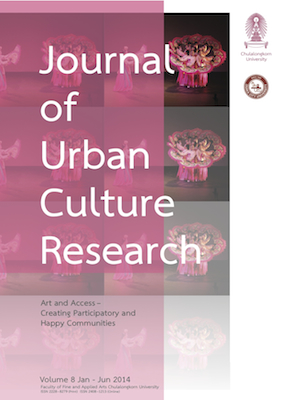Occupy Action! Collective Actions and Emotions in Public Places
DOI:
https://doi.org/10.14456/jucr.2014.13Keywords:
Social Movements, Occupy Movement, Emotions, Public/Private Space, Online/Offline SpaceAbstract
In recent times there is an accelerated movement in the privatization of public land. Some representative cases are the names of subway stops and central squares being associated with the brands of large corporations. Consequently the city centers are becoming an ambiguous territory making it unclear what is public and private. Additionally these newly established social practices have consequences and poses questions as where private ground begins (and ends) and how the freedom to use such spaces are affected? The privatization of public land appears to be an encroaching process and standard as similar patterns were found in other European cities. In our research, we have observed that a chronotope has been generated and repeated in this process. Similarities in London and Madrid were found during our ethnographic work allowing us to assert that any change or social transformation happens as a product of its historical context. The purpose of this paper is to present the Occupy Movement as a collective action and to create an archive that supports collective actions and emotions. The results of this analysis will show how to recognize if a square is private, public or almost–public.
Downloads
Published
How to Cite
Issue
Section
License
Authors authorize the JUCR to publish their materials both in print and online while retaining their full individual copyright. The copyright of JUCR volumes is retained by Chulalongkorn University.
The views and opinions expressed herein are those of the individual author(s) and do not necessarily reflect the policies or opinions of the Journal (JUCR), it editors and staff, Chulalongkorn University, or Osaka Metropolitan University.







